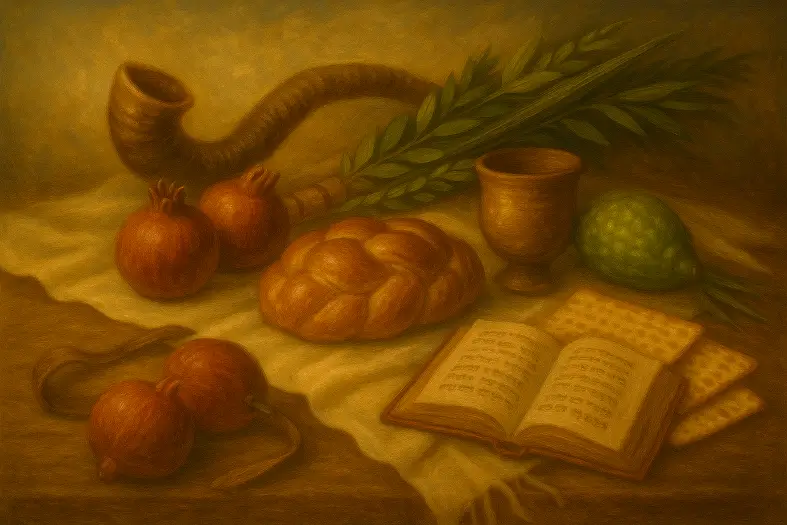


On each day of Passover, Israel must bring additional offerings — two bulls, one ram, seven lambs, and one goat — in addition to the daily tamid.
This mitzvah establishes the korban musaf for the days of Pesach. The musaf sacrifices include bulls, a ram, lambs, and a goat, together with their meal and drink offerings. Unlike the Paschal Lamb (korban Pesach), which is eaten in family groups, the musaf offerings are communal korbanot, emphasizing national service in the Mikdash.
The musaf of Pesach reflects its dual meaning: freedom from Egypt and ongoing dependence on Hashem. The bulls represent power and abundance, the ram symbolizes dedication, the lambs reflect humility and purity, and the goat serves for atonement. Rambam codifies this structure in Hilchot Temidin uMusafin, stressing the precise order. The Talmud (Pesachim 59b) links these offerings to Israel’s covenantal renewal each year. Sefer HaChinuch (Mitzvah 403) explains that musafim elevate the festival beyond remembrance, turning it into active sanctification.
Commentary & Classical Explanation:
Contrast with Rosh Chodesh Musaf (Mitzvah 382):
Parallel to Shavuot and Sukkot Musafim:


Mitzvot related to the Jewish festivals — their observance, rituals, prohibitions, and spiritual significance. This includes Torah-commanded holidays like Pesach, Shavuot, and Sukkot, as well as rabbinic celebrations such as Purim and Chanukah.
Concerns the Beit HaMikdash, korbanot (offerings), and priestly service.
Mitzvot that strengthen communal life — showing up, participating, supporting, and belonging. Community is where holiness is shared, prayers are multiplied, and responsibility becomes collective.
Represents Emunah—the deep, inner trust in Hashem’s presence, oneness, and constant involvement in our lives. This badge symbolizes a heartfelt connection to G-d, rooted in belief even when we cannot see. It is the emotional and spiritual core of many mitzvot.
Signifies awe and reverence toward Hashem—living with awareness of His greatness and presence.
Mitzvot that define and deepen the relationship between a person and their Creator. These include commandments involving belief, prayer, Shabbat, festivals, sacrifices, and personal holiness — expressions of devotion rooted in divine connection.

Dive into mitzvot, prayer, and Torah study—each section curated to help you learn, reflect, and live with intention. New insights are added regularly, creating an evolving space for spiritual growth.

Explore the 613 mitzvot and uncover the meaning behind each one. Discover practical ways to integrate them into your daily life with insights, sources, and guided reflection.

Learn the structure, depth, and spiritual intent behind Jewish prayer. Dive into morning blessings, Shema, Amidah, and more—with tools to enrich your daily connection.

Each week’s parsha offers timeless wisdom and modern relevance. Explore summaries, key themes, and mitzvah connections to deepen your understanding of the Torah cycle.